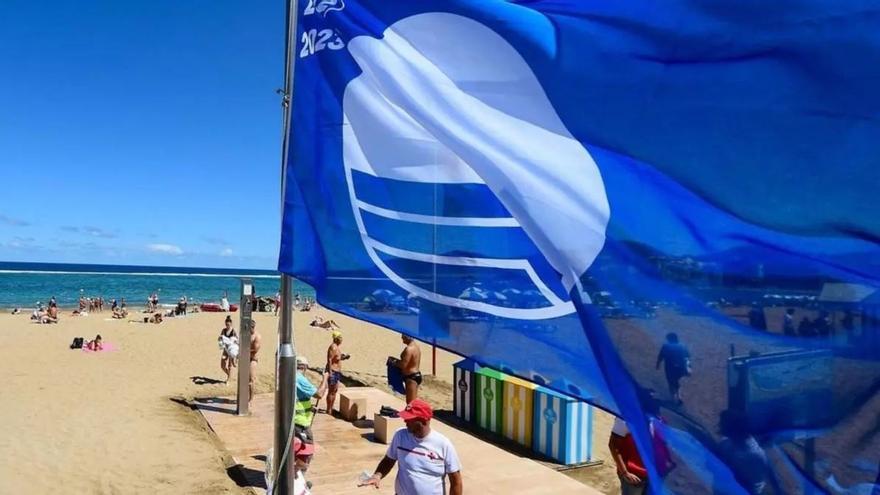
Acquiring a blue flag signifies adhering to stringent requirements regarding Water quality, environmental management, Safety and accessibility, and Environmental Education. This initiative aims not merely to draw in tourists but to establish a model of a Sustainable, safe and responsible coastline. This summer, 47 blue flags will be displayed across beaches, swimming areas, and sports ports in the Canary Islands—a decrease from 2024, when the archipelago boasted 56 flags. The loss of nine flags, without any new additions, highlights a Growing challenge in the sustainable and secure management of the Canarian coastline.
This information was disclosed by the Environmental and Consumer Education Association (Adeac), the organisation responsible for bestowing these accolades in Spain as part of the international Blue Flag programme.
Which beaches will lose the blue flag in 2025?
The losses are primarily concentrated on three islands:
- Tenerife: Fañabé (Adeje), La Noche (Arona), the dock and natural pools at El Caletón (Garachico).
- Lanzarote: Matagorda, Barrilla, the wells (Tías), and the spoons (Teguise).
These beaches will no longer display the flag for various reasons, which can include Water quality and waste management, as well as inadequate lifeguard or accessibility facilities.
Where will the blue flag be displayed: all certified beaches and areas
Tenerife
Natural pools of Bajamar, Arenisco and Jover (La Laguna); La Jarquita and San Juan (Guía de Isora); Los Cristianos and Playa de las Vistas (Arona); Playa del Dukes and Torviscas (Adeje); San Marcos (Icod); Socorro (Los Realejos); Playa de la Arena (Tacoronte).
El Hierro
La Restinga (El Pinar), Timijiraque (Valverde).
La Gomera
Santiago Beach (Alajeró).
La Palma
Charco Verde, Puerto Naos, Bajos, Los Cancajos, Tazacorte, Santa Cruz de La Palma.
Gran Canaria
Maspalomas, Playa del Inglés, Meloneras, San Agustín (San Bartolomé de Tirajana); Hoya del Pozo, La Garita, Melenara, Salinetas (Telde); El Puertito, Los Charcones (Arucas); Las Nieves (Agaete); Sardina (Gáldar); El Burrero (Ingenio); Arinaga (Agüimes).
Fuerteventura
Butihondo, Costa Calma, El Matorral, Morro Jable (Pájara); Playa Blanca, Los Pozos, Puerto Lajas (Puerto del Rosario); Las Grandes Playas, El Lajero (La Oliva); Gran Tarajal (Tuineje).
Lanzarote
El Reducto (Arrecife), Playa Blanca (Yaiza).
Also recognised ports and interpretation centres
In addition to the beaches, four sports ports will also be awarded the blue flag:
- Real Náutico Club de Santa Cruz de Tenerife
- Puerto Blanco (San Bartolomé de Tirajana)
- Port of Mogán (Gran Canaria)
- Puerto Calero (Yaiza, Lanzarote)
Additionally, four educational and environmental spaces have been recognised as Blue Centres:
- Nature Classroom Rambla de Castro (Los Realejos, Tenerife)
- Restingolite Museum (El Pinar, El Hierro)
- Maspalomas Dunes Interpretation Centre
- Educational Classroom of the Tony Gallardo Park (Maspalomas, Gran Canaria)
Special recognition for “Canary Islands, 1,500 km of coast”
The 2025 edition has also served to commend the educational and drowning prevention platform “Canary Islands, 1,500 km of coast”, receiving the Special Mention of the jury for lifeguard services.
Led by Sebastián Quintana, this platform has been advocating for years regarding Awareness, Training and Education on the dangers of swimming in open waters, particularly in areas prone to hazardous currents. Its impact has been so significant that the president of Adeac, José Palacios, stated: “You cannot fathom how many lives have been saved thanks to their efforts.”















